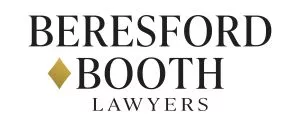- within Real Estate and Construction topic(s)
- in United States
- within Real Estate and Construction, Government, Public Sector, Litigation and Mediation & Arbitration topic(s)
- with readers working within the Insurance industries
An easement is a nonpossessory right to use or enjoy someone else's land. In other words, an easement grants the holder a limited privilege to perform certain acts on someone else's land without owning that land. It is a right to use, but not own (outright), the land owned by another. The party who enjoys the "use" is referred to as the "benefitted party" or "grantee." The party who owns the property subject to easement is the "burdened party" or "grantor." There are two major categories of easements: Appurtenant Easements and Easements in Gross.
RCW 64.65.010 defines an easement in gross as an "easement not tied to or dependent on ownership or occupancy of a unit or a parcel of real property." For an easement in gross, the benefit goes to a specific party. In other words, an easement in gross burdens land, and benefits persons, but does not benefit land. Typically, unless expressly called out in the document, the parties cannot transfer their easement rights to other parties, and the rights do not depend on property ownership. The rights flow to the party, rather than to the property.
Common examples of easements in gross include those involving public roads, utility lines (power lines, gas lines, sewer, drainage, etc.), railroad rights of ways, and rights to extract minerals. Many property owners grant easements in gross to a utility companies or quasi-governmental agencies for these purposes. This is how utility companies can enter private properties to conduct maintenance on power lines, for example. Property owners may also grant conservation easements (for wetlands, critical areas, etc.) essentially as voluntary donations to benefit the public. Less often, a property owner may grant an easement in gross to a benefitted party for some kind of private use, such as fishing or swimming in the property owner's personal pond. This does not happen very often, of course, as most property owners simply grant permission rather than an easement for such purposes.
Most easements in Washington State, however, are appurtenant easements. Indeed, Washington courts strongly presume easements to be appurtenant rather than in gross. RCW 64.65.010 defines an appurtenant easement as an "easement tied to or dependent on ownership or occupancy of a unit or a parcel of real property." In other word, both the benefit and burden with appurtenant easements flow to properties, rather than to people. Appurtenant easements almost always involve properties located very near to each other – often adjacent to each other. The property owned by burdened party/grantor is referred to as the "servient estate." The property owned by benefitted party/grantee is referred to as the "dominant estate."
Written appurtenant easements must be recorded and often, though not always, last in perpetuity. The grantor and grantee necessarily can transfer their rights under appurtenant easements to other parties (typically successor owners). The easements are tied to the land, or as commonly stated, "run with the land." They will remain binding on successor owners to the dominant and servient estates. A variety of different appurtenant easements exist, and their scopes can be limited by their express terms. Some of the most common types of appurtenant easements involve those for ingress and egress (pathways, driveways, etc.) and exclusive use easements (such as for enclosed areas not used by the property owner) which can take a large variety of forms.
When drafting an easement of any kind, whether appurtenant or in gross, parties must take many factors under consideration, including the scope and purpose of the easement, consideration exchanged for the easement, responsibility for maintenance of the easement area, indemnification, dispute resolution, and forms of allowable remedies. A well-crafted easement can save parties significant legal fees and costs otherwise spent in future litigation. The services of an experienced lawyer can prove invaluable in this capacity. Unfortunately, many easements involve poor drafting, which can create serious disputes between property owners.
The content of this article is intended to provide a general guide to the subject matter. Specialist advice should be sought about your specific circumstances.


